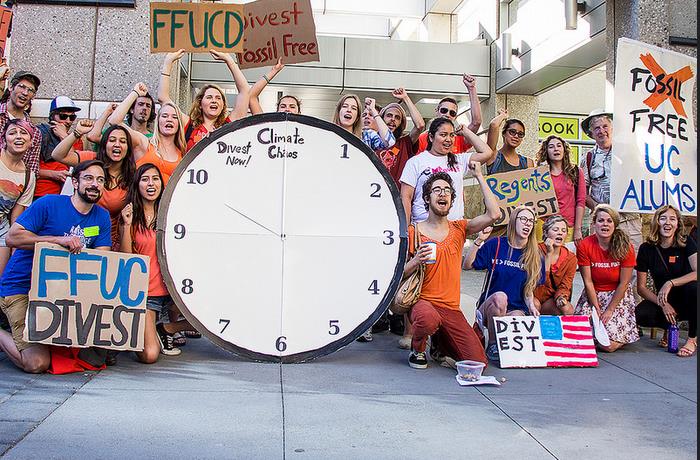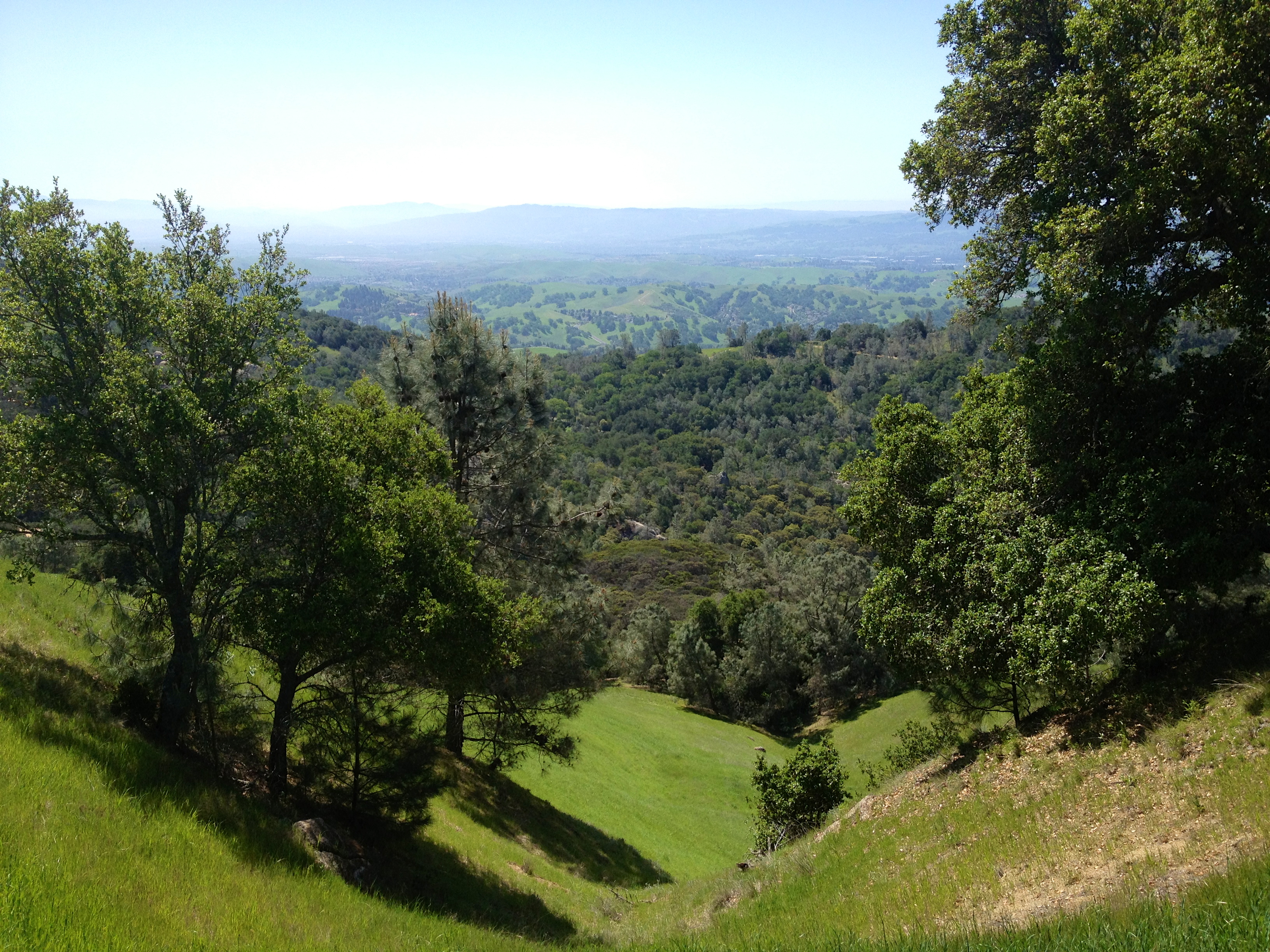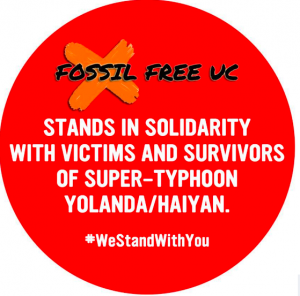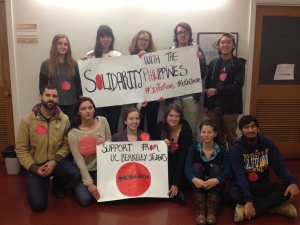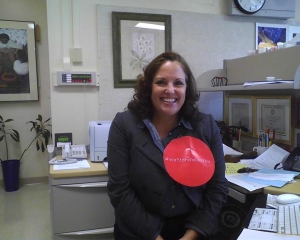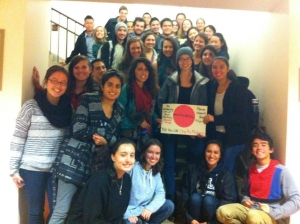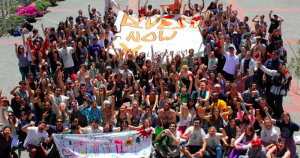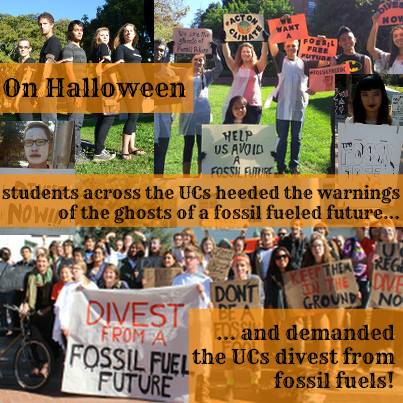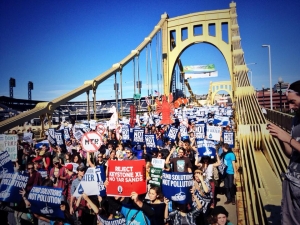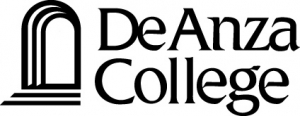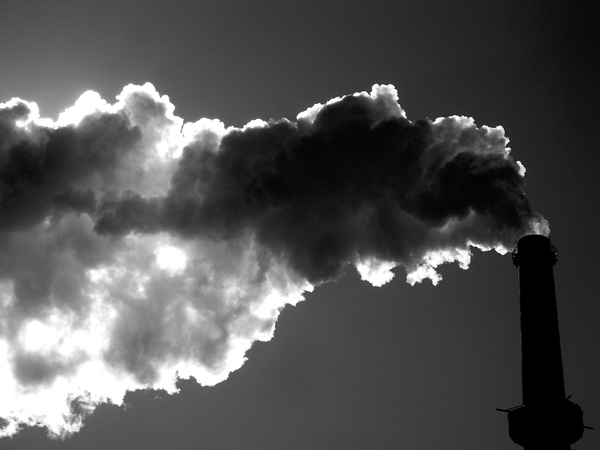by Arjun Pandava, UC Berkeley student
The following piece reflects the view of the author only, and not CSSC as an organization.
The environmental justice movement has brought important dimensions of race and class to mainstream environmentalism. But what is often overlooked is how closely related the environmental justice movement is to struggles of decolonization-especially in the context of decarbonization and the global movement toward a zero-carbon economy. The dynamics of the carbon economy have strong similarities and parallels with the dynamics of colonialism; thus, it is crucial to analyze the ways in which the innovations and theories of anti-colonial revolutionaries can be applied to modern decarbonization and environmental justice struggles.
A meeting took place a few months ago at a prominent university in the Bay Area, California, between activists from Richmond and Pittsburg, and local students. The community activists explained the serious problems associated with the imminent expansion of infrastructure supporting the carbon economy-specifically, the rapidly growing oil industry of North America. As I’ve written in this recent piece, this infrastructure already has a history of severely degrading the health of locals; thus, its expansion can only mean the simultaneous expansion of externalities that local communities must bear.
At the meeting, remarks were made as to how it felt like they are “being invaded by these oil companies”-companies that include multinationals like Chevron and Royal Dutch Shell. Another key observation was the domination of these companies in local politics; for example, Chevron spent around $1.2M on the Richmond City Council election in 2012. An activist from Pittsburg commented on how these companies always find the most corrupt and malleable cities in which to build their dirty businesses, which makes perfect sense-these are the areas where bearing the costs of environmental externalities can be most easily avoided, due to more lax regulations and a decreased likelihood of litigation.
These characteristics that define the struggle of Northern Bay Area communities-invasion and domination by foreign actors, the extraction of value, and the localization of externalities-are strongly reminiscent of colonialism, and the historical practices that Europe (and in general, the abstract entity of global capitalism) took toward controlling the resources and populations of the Third World. Time and time again, especially in the 20th century, powerful capitalists and the militarized states that backed them took control of resource-rich regions across Latin America, Africa, and Asia, exploited and repressed local populations, and extracted huge amounts of value, all while leaving locals to deal with the externalities of the value-production and resource-extraction processes.
The Persistence of Colonial Domination
Colonization is strongly tied with the repression and exploitation of people of color. This should be obvious to even the most historically illiterate person, given that colonialism as a historic tendency was almost always seen as the domination of the Americas, Africa, and Asia by European powers. Or put in terms of race: colonialism was the domination of Black and Brown peoples by White elites.
(It should be noted that I use the terms “Black” and “Brown” to be inclusive of East and South-East Asian peoples. Historically, the term “Yellow” has been used to specify these geographies; however, I believe that this term is far too intertwined with its historically racist uses to be used in a progressive manner today. In addition, Asian radicals have also argued for “Brown” to be encompassing of traditionally “yellow” populations given the historic “negroization” of Asians in the West, as well as the undeniable “brownness” of South and South-East Asians).
Thus far, we have framed colonialism as if it was an historic relic of a bygone era. However, this is an incorrect way to frame things; analyzing the situation of Black and Brown peoples today, we can see that the same patterns of domination persist-albeit in more hidden, more systemic, and less overt ways. More often than not, the decolonization efforts of the mid-20th century has simply evolved colonialism into “neocolonialism”. The term was first coined by the anti-colonial revolutionary Kwame Nkrumah, in his 1965 book Neo-Colonialism, the Last Stage of Imperialism. From the introduction:
The essence of neo-colonialism is that the State which is subject to it is, in theory, independent and has all the outward trappings of international sovereignty. In reality its economic system and thus its political policy is directed from outside.
An exemplar of neocolonial control is the case of Nigeria. The Nigerian government receives around 80% of its revenue from oil rents-essentially kickbacks from multinationals like Chevron and Royal Dutch Shell, in exchange for lax environmental regulations and providing security when locals start to get upset that their land, water, and air are being utterly destroyed by irresponsible extraction practices.
“Show me what development looks like!”
The parallels between Nkrumah’s description of economic and political policy being “directed from outside”, the neocolonial economy of Nigeria, and the reproduction of colonial control in Western communities of color is startlingly evident in the case of Richmond. As pointed out by the leftist magazine In These Times:
The city of 100,000 has grown up around the Chevron refinery, which is older than Richmond itself. Until 2005, the corporation was allowed to appoint its own inspectors, and last year’s fire was the third major accident to occur at the refinery since 1999. Seventy percent of Richmond’s residents are black, Latino or Asian American, and residents of North Richmond, where several public housing projects are located, bear the brunt of the health burden resulting from ongoing toxic exposure. Though it’s difficult to prove that high rates of asthma, cancer and heart disease among Richmond residents are linked to industrial pollutants—something community groups have long argued—people of color in Richmond have a life expectancy 10 years shorter than whites in other parts of the country, according to the city’s Health Equity Partnership.
Both Richmond and Pittsburg are populated by low-income people of color; postcolonial subjects battling continually expanding systems of colonialism (making the “post” of postcolonialism a highly questionable prefix). And this modern exploitation is on top of the bloody history of the East Bay, given the genocidal policies of Spain against the Ohlone during the 18th and 19th centuries.
But the truly important thing to note here is not that both Richmond and Nigeria are colonized spaces, but that they are both colonized by the same entity. Both the Niger Delta and Richmond, California are subordinate to the interests of Chevron Corporation and the global oil markets. And these aren’t the only locations where Chevron has flexed its political and economic muscle. The oil giant is currently locked in a battle with the government of Ecuador over alleged environmental pollution. Chevron has also recently made moves in Romania, where paramilitary forces occupied a rebellious village so that the company could carry on shale gas exploration activity.
“Whose streets?” “Chevron’s streets!”
And even aside from Chevron, the infrastructure that the people of the Northern Bay Area are confronting is part of a single supply chain. There is a good chance that the oil that will be funneled into proposed expansion projects will be coming from the oil fields of Canada, where First Nations are already dealing with pollution from oil extraction.
These observations should reveal the insidious and interconnected nature of the global oil economy: it is one that sets up tendrils of colonial domination along its entire supply chain. The oil economy is one of repression, pollution, corruption, and poverty-a system that forms a unique nexus of environmental, political, and economic violence, and a key foundation of modern global capitalism.
Collaborators and Compradors
We have argued that colonialism remains a prominent force in modern society, but it is also important to explore the factors that sustain it-especially the factors that can be directly challenged by those who wish to end their domination.
The process of colonization is typically depicted as a purely military affair, but it is crucial to acknowledge the massive role that local collaboration plays. Historically, colonialism was possible largely due to local political and economic elites, who used their positions of power, privilege, and authority to sell out the autonomy of their constituents in exchange for material wealth and military support against threats to their power-whether this threat was from rival elites, or from the masses. In other words, local elites were often bribed to undermine local autonomy so that they could consolidate their own wealth and power. An excellent example of this is the process by which the East India Company steadily took over South Asia in the 18th and 19th centuries, pitting local rulers against one another and buying up more and more economic assets-and resorting to military force when locals decided not to play along with the company tune. Today, however, colonial collaborators (or compradors, as this class of people have often been called) seem less concerned about taking down rivals, so much as increasing their own wealth-as seen in the aforementioned cases of Nigeria and Romania.
This tendency can be seen today in the Bay Area, as well. One example is Nathaniel Bates, a career politician in Richmond, who has been more than content to play fiddle for Chevron in exchange for massive amounts of campaign financing (as mentioned above). Another good example is the Seeno family, a political and economic dynasty that runs a corrupt, mafia-esque real estate empire from their base of operations in the East Bay. This multi-billion dollar family has unsurprisingly backed political campaigns across California and Nevada, including Pittsburg, and will likely play an important role in the struggle between Pittsburg residents and Wes Pac Energy Group over the proposed expansion of oil infrastructure.
Current Strategies of Resistance
The fact that there are specific actors who mediate the colonial-corporate domination of the Bay Area presents one obvious route of struggle-removing these compradors from office, and replacing them with people who are part of the community, and who have the community’s interests in mind rather than the interests of international capital. This strategy of electoralism was also favored by many anti-colonial activists back in the early days of the decolonization struggle; one notable example is the movement by South Asian bourgeoisie to create the Indian National Congress, to serve as a democratic organ of self-determination.
From this perspective, the situation of the Bay does not seem so drastic-systems of democratic governance have existed for a long time, and the abstract idea of democracy has overwhelming support among the masses. And indeed, the fact that local organs of political power-namely, the City Councils-can play a key role in resisting encroachment by carbon corporations has long been recognized by community activists, especially in Richmond. In 2003, locals who had had enough of Chevron and the generally reactionary nature of the city (one of these locals’ family had recently been assaulted by the police) formed the Richmond Progressive Alliance (RPA), which rapidly escalated into a serious challenge to politicians backed by Chevron’s deep pockets. Residents of Pittsburg, inspired by this apparent success, are also beginning to organize an electoral campaign against the current incumbent city councilors (all of whom ran unopposed during the last election cycle). And what is especially invigorating about these recent electoral mobilizations is that they are specifically oriented against the Democratic Party-a political machine that has long since siphoned away radical currents into supporting the very capitalist institutions that generated the need for such currents in the first place. A recent protest march in Pittsburg saw speeches condemning the Democrats as corrupt and expressing the need for a party that espouses actual democratic values, rather than the values of the elite capitalist class.
The electoral strategy has proven to be somewhat fruitful; the RPA currently has control of the mayor’s seat, as well as one city council seat (something that would have been impossible just a decade ago). Due to this increasing organization by the people of Richmond, Chevron has been forced to deal with increased litigation for the rampant pollution, and make unprecedented amounts of concessions in terms of local development-both signs of the company’s eroded grip on the once “loyal” company town.
Future Horizons of Rebellion-Beyond Electoral Politics
But despite the apparent success of the electoral path, its important to exercise caution against becoming uncritical or complacent. While Richmond is definitely in a better position than it was a decade ago, there are indications that without expanding and deepening the struggle, the electoral strategy has already peaked. The 2010 and 2012 election cycles saw Chevron truly begin to flex its economic prowess, pouring $1M and $1.2M into each respective race, as well as announcing a $15.5M community development scheme. The 2012 elections saw two anti-Chevron candidates losing their positions, eroding the gains made in the 2010 cycle.
The lesson to be had, then, is that we must return to the analysis made by Nkrumah: that even if our political institutions have the “outward trappings” of self-determination and democracy, it is very often the case that they are still controlled by powerful external actors. The initial success of the RPA might very well have simply been a “surprise factor”; clearly, given the recent electoral bounce-back, Chevron is able and willing to leverage its economic assets in order to protect and consolidate its political power.
The electoral strategy might still be viable, given that adjacent communities like Pittsburg are beginning to organize along similar anti-carbon lines, and will thus provide a grassroots network that can increase the visibility and popularity of groups like the RPA. Genuine grassroots organizing could still prove to be a match against raw monetary power. However, we must also recognize that the system is fundamentally tilted in favor of powerful colonizing and capitalist entities like Chevron: as long as certain actors have enormous amounts of capital at their disposal, these actors will inevitable colonize democracy itself, and bend public institutions to their will. Their “will” being, of course, to accumulate more capital-and thus, gain even more power over democratic structures.
This materialist understanding of politics-that economic power is the fundamental driving force of political power, and the feedback cycles associated with this dynamic-is critical if the decarbonization/decolonization struggle is to achieve its desired goals. While the jury may still be out on whether the electoral strategy will continue to yield progressive results, discussions must be had with respect to what strategies would actually deal with the economic basis of political power.
If economic power can indeed typically overwhelm grassroots organizing and “people-power”, then the clear alternative to targeting political structures would be to target the very economic base on which the corporate domination of politics lies-that is, to engage in actions and strategies that undermine the concentration of capital and, and redistribute economic power.
This type of analysis was precisely the sort advanced by numerous anti-colonial revolutionaries in the mid-20th century. Consider the following quotation from the Algerian revolutionary Frantz Fanon, in his ground-breaking 1961 book The Wretched of the Earth:
The basic confrontation which seemed to be colonialism versus anti-colonialism, indeed capitalism versus socialism, is already losing its importance. What matters today, the issue which blocks the horizon, is the need for a redistribution of wealth. Humanity will have to address this question, no matter how devastating the consequences may be.
Fanon wrote this book in the context of French colonization of Algeria and the fact that most economic assets in the country-namely agricultural land-were controlled by French settlers. Even if democratic structures were set up that allowed indigenous Algerians to participate, the nature of the economy would mean that White settlers would inevitable dominate the political arena-rendering political decolonization more or less useless with regards to genuine self-empowerment and bringing material gains and prosperity to the natives. Genuine decolonization would mean the redistribution of land back into the hands of the natives, so that the political playing field is not skewed toward a wealthy economic elite.
In the context of the Bay, genuine decolonization would mean the redistribution of not land, but the means of production, distribution, and other forms of value generation. If communities were able to generate just as much wealth as the Chevron’s refinery, then the problem of the company’s dominance in politics would essentially solve itself. This implies a need for both the development of community economies, as well as direct actions to interfere with Chevron’s ability to accumulate capital. The former has already been taking root in the East Bay, in the forms of solidarity economies, urban farms, and other community-based cooperative ventures. The latter has also taken concrete forms, such during an organized blockade of Chevron’s refinery last August by thousands of local people.
This dual movement-empowering the community while undermining the corporation-presents the best way to directly engage the economic base of politics. This does not mean that electoral politics is irrelevant; on the contrary, deepening the political struggle on the level of economics is arguably the only way by which to see gains made in parliamentary spaces be anything other than a transient phenomena.
Remarks on Internationalism
A final point I wish to emphasize is that it is essential that we frame the decarbonization struggle from an international perspective. As argued above, the colonial tendencies of the oil industry is one that is reproduced along its entire supply chain. This fact renders clear the ability for different parts of the supply chain to be undermined at once. Imagine the impacts if blockades, strikes, and expropriation happened in Alberta, Richmond, Nigeria, and Romania all at the same time, in a coordinated fashion. Imagine the effects on local morale if there were clear signs of international solidarity-a solidarity not defined by Facebook “likes” or empty declarations, but one defined by concrete actions against a common enemy, perpetrated by fellow colonial subjects.
In addition, we must also recognize the disparate levels of colonial violence that different global communities have to deal with. While we have seen that colonial systems exist across the globe, we must also recognize that certain communities (like the Ogoni people of the Niger Delta) have to face far more violent systems of repression than do communities in North America and Europe. Therefore, it would be morally unacceptable for Western communities to throw off their own shackles, but do nothing to assist those dealing with far greater levels of violence, poverty, and domination-especially given that much of the perpetrating structures are based in the West.
Conclusion
The actuality of such a radical decolonial struggle in the Bay and its “devastating consequences” is probably quite far away, and perhaps might not even be necessary. Nonetheless, the parallels between decolonization and decarbonization are clear; thus, let this be a call for those concerned about the health and livelihood of the Bay Area to engage in the study of the anti-colonial revolutionaries of ages past, and their strategies and tactics, so that we may engage in a proper decarbonization struggle: one that emancipates both nature and people.

